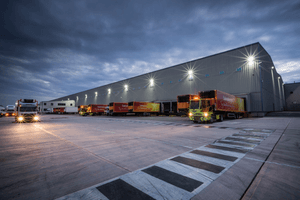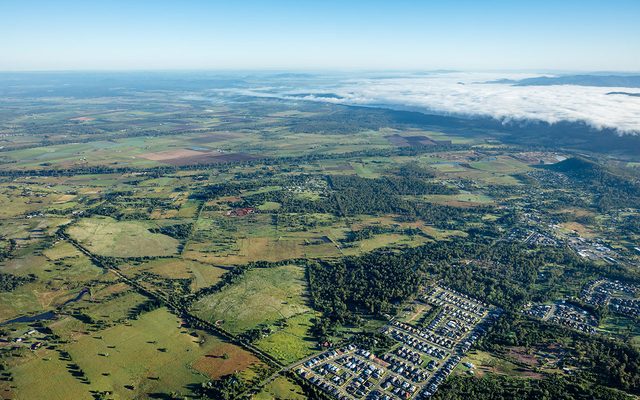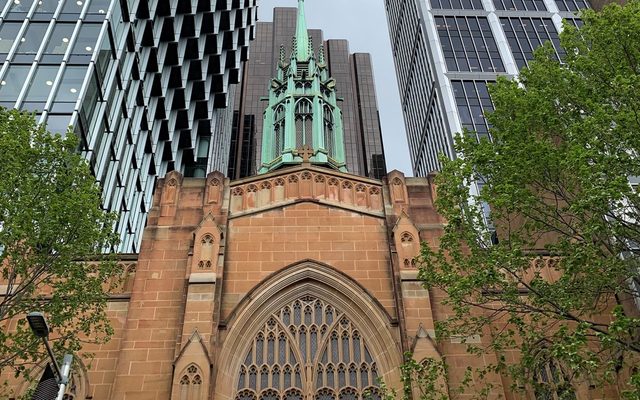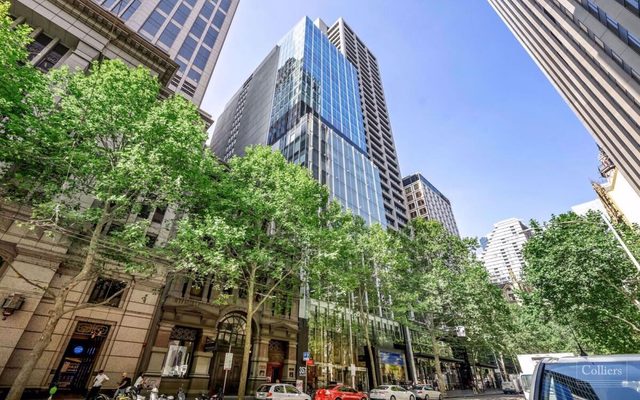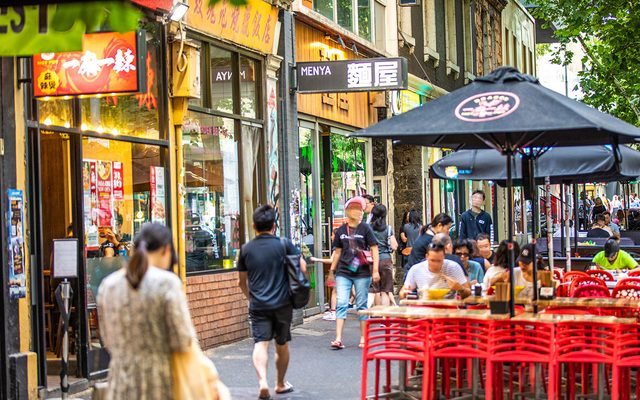This article is from the Australian Property Journal archive
BOTH CBD and non-CBD office markets are experiencing positive demand for the first time since January 2023, resulting in the vacancy rate tightening across more than half of the capital city CBDs. But Melbourne continues to languish, nudging closer to having almost 1 million sqm of vacant office space.
According to the Property Council’s July 2024 edition of the Office Market Report, Australia’s overall office vacancy rate fell from 14.8% to 14.6% over the last six months, though this rate still sits 4.2% above the historical average.
Overall vacancies in the combined CBDs remained largely stable over the period, increasing from 13.5% to 13.6%.
While nationally non-CBD office markets fell from 17.9% to 17.2% over the six months to July.
“It is pleasing to see vacancy levels fall in half of Australia’s CBDs. There is room for very cautious optimism in parts of the office market,” said Mike Zorbas, chief executive at the Property Council of Australia.
“In our CBDs, office supply is continuing to be a driving force for vacancy levels as demand for office space has been positive. This demonstrates businesses still see a CBD location as the best place to do business.”
Joanne Henderson, national director of research at Colliers noted the improved stability across the office market was driven by a combined decline in vacancy of nearly 120,00sqm across Sydney, Brisbane and Adelaide CBD markets.
“More robust activity from larger tenant movement (above 1,000 sqm) in the CBD’s has underpinned the decline in vacancy over H1,” added Henderson.
“Positive take-up from large net moves totalled 86,800 sqm with over half of this from centralisation activity and new CBD office openings. Positive CBD net demand from larger moves over the period not only offset but surpassed negative net demand from tenants contracting or relocating outside of the CBD, which totalled 78,000 sqm.”
Brisbane
Brisbane saw a significant decline in its vacancy rate over the period, falling from 11.7% to 9.5%, with its vacancy dropping below the 10% mark since January 2013.
This as the Brisbane CBD saw net absorption of 26,552sqm with net supply decreased by 27,245 sqm.
The Brisbane fringe market also recorded its seventh consecutive period of positive take-up at 16,065sqm, bringing the vacancy rate down to 12%.
“The vacancy rate in Brisbane has once again declined, reaching a single digit vacancy rate and the largest decline in the country. This level of vacancy hasn’t been observed since January 2013, and is a significant milestone for the Brisbane CBD, which continues to be impacted by low levels of new supply additions and strong demand,” said Matt Kearney, national director of office leasing, QLD at Colliers.
“The market has demonstrated strong net absorption, second only to Adelaide. Brisbane’s economic growth and Queensland’s emergence as a thriving business environment have been key drivers in this performance.”
Sydney
Sydney’s CBD office vacancy rate also saw a decline over the period, down from 12.2% to 11.6%.
“In a positive sign, Sydney CBD’s vacancy rate has declined over the first half of 2024 for the first time in five years (since Jul-19) with a hiatus in major supply additions over the last two years allowing for vacancy stabilisation to occur,” said Jock Gilchrist, head of leasing, NSW at Colliers.
“Alongside the pause in new supply, healthy levels of leasing activity have underpinned greater stability in vacancy levels.”
In H1 2024, Sydney’s gross leasing activity improved by more than 20% from the same period in 2023, thanks to an uplift in activity from 3,000sqm-plus tenants.
“Although we do expect vacancy to increase over the second half of 2024 with the first tranche of Sydney’s over station developments completing, heading into 2025 there are only two developments expected to enter stock totalling 46,500 sqm,” added Gilchrist.
Sydney is set to see the lion’s share of additional new space coming online in the second half of 2024, with close to 300,000sqm due through to 2026 and 61.4% of that space already pre-committed.
Adelaide
Adelaide also saw a decline in its CBD office vacancy rate, down from 19.3% to 17.5%.
“The strong momentum in tenant activity observed last year has continued into the first half of this year, leading to a significant decline in the vacancy rate over H1. We have noticed that the availability of office space to lease within higher-grade buildings is limited, of which most of the space is already committed but not yet occupied,” said James Young, state chief executive and national director, South Australia at Colliers.
“We expect the vacancy rate for these buildings to decrease further in the second half of 2024 following tenant relocations and the continued demand for this quality of office accommodation. However, lower-grade buildings are expected to continue to face upward pressure on their vacancy rates in this occupancy transition phase our market is experiencing.”
Zorbas noted that demand in Adelaide and Brisbane is currently up 5.9 and 2.7 times their historical averages respectively.
“We continue to see a preference for high quality office spaces, with Sydney and Adelaide being the only capitals to record higher prime vacancy than secondary vacancy,” added Zorbas.
Melbourne
At the same time, Melbourne’s vacancy rate grew over the period from 16.6% to 18%, representing the ninth consecutive increase for vacancy rates, and representing 943,775sqm of available stock.
“Upward pressure on vacancy continues to be expressed across the Melbourne CBD as a result of new supply entering the market and resultant backfill post completion with additional sublease vacancy also in the mix,” added Andrew Beasley, national director of office leasing, VIC at Colliers.
“Positively for the Melbourne CBD, gross leasing activity by area has been robust through FY24 with 138,900 sqm of leased space, an increase of 15% compared to that recorded 12 months prior (120,400 sqm).”
Enquiry levels were also strong over FY24 in the Melbourne CBD, at 628,500sqm, or the second highest enquiry by area over the decade but down 8% from the FY23 peak.
“Despite the negative sentiment, we expect to see strong leasing activity across the second half of 2024, particularly for tenants in excess of 5,000 sqm with a number of larger transactions to be announced in Q3 / Q4 2024,” added Beasley.
In Melbourne, almost 250,000sqm is forecast to come online in Melbourne by 2026, with 20% of that space pre-committed.
“We’ve seen the strength of tenant enquiry steadily return to pre-pandemic levels as occupiers have worked through their hybrid working arrangements and space requirements,” said Chas Keogh, national director and joint head of department of office leasing Victoria at Cushman & Wakefield.
“With those plans now set and tenants looking ahead again, we’re seeing more clarity among tenants and confidence to transact.”
Canberra
Canberra’s vacancy rate was also up over the six-month period, from 8.3% to 9.5%.
“The Canberra market saw multiple major completions over the first half of 2024, delivering above average net supply additions,” said Aaron Brice, national director of office leasing ACT at Colliers.
“Net absorption in the market remains strong, however elevated levels of supply outstripped positive demand and is putting upward pressure on vacancy. Looking forward we are expecting to see another year of strong supply over 2025, however this is expected to taper off post 2025.”
Perth
Perth’s vacancy rate rose from 14.7% to 15.5%, while West Perth’s office market absorbed 2,553sqm and saw vacancies drop to 11.5%.
“The Perth CBD market recorded strong supply over the first half of 2024 with the completion of multiple major projects. Elevated supply and negative net absorption is continuing to put upward pressure on vacancy rates,” said Jemma Hutchinson, national director of office leasing, WA at Colliers.
“However, despite vacancy increasing, it remains below the 10-year average. In addition and in a positive sign for H2, we expect vacancy to decrease over H2 with a number of leases signed to the vacancy being recorded over the H1 figures.”
Meanwhile, sublease vacancy was down in both the CBD and non-CBD markets, with Adelaide, Sydney and Melbourne recording declines.
Supply is expected to stay above the historical average until January 2026 in the CBD markets, with non-CBD market supply set to remain near or above.
“Central core assets continue to attract strong demand, resulting in rental growth, while outer core, fringe, and metro assets are grappling with higher vacancy rates. Overall operating costs have risen, driven by increases in energy and insurance expenses. However, in some markets, incentives have offset these cost hikes,” said Tim Molchanoff, head of office leasing, Australia and New Zealand at Cushman & Wakefield.
“Looking ahead, vacancy across Australian office markets will vary by city and driven by factors such as new supply, employment growth, and a tight labour market. We believe Brisbane and Perth will continue to stand out, while larger markets like Sydney and Melbourne will see strong performance in core locations but face challenges with fringe assets.”

